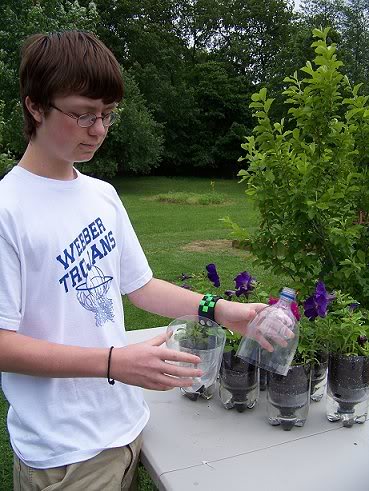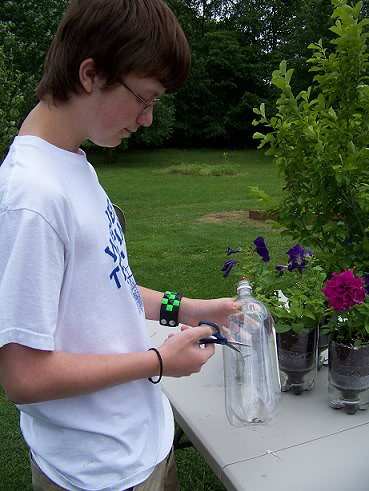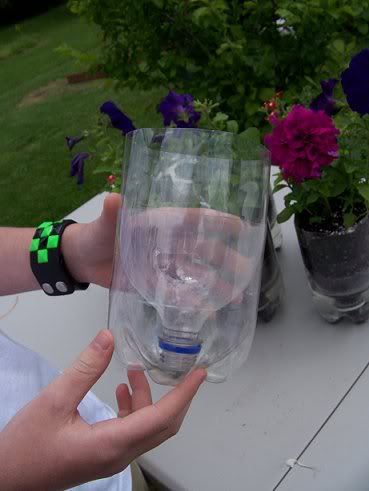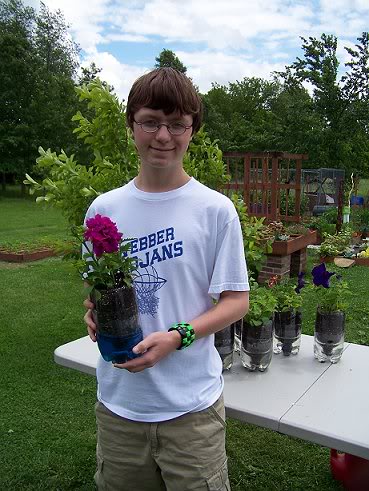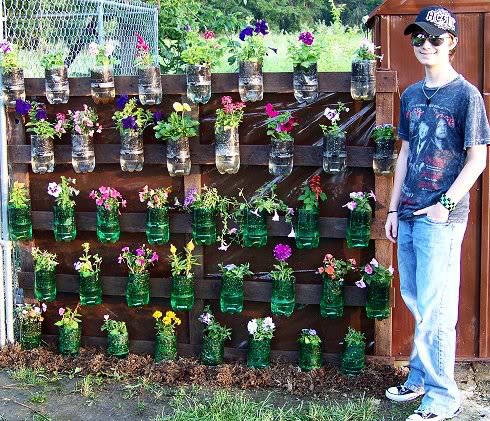It’s amazing easy to get started with building a resilient home.
Additionally, it’s possible to do it with a budget that is close to zero.
The best way to get started is to find a simple project that:
- Is easy to build. Something you have the skill sets to do.
- Is inexpensive enough you won’t meltdown if it doesn’t work out.
- Lasts a long time. Even inexpensive, easy projects can last for a long time.
- Operates itself. It doesn’t require too much hands on care.
- Is net positive. A project that produces more than you put in.
Want some examples?
Here’s two great projects from Josh Greene, a teen gardener based in Illinois. I really like his pluck.
The first is a self watering pot, made out of a recycled plastic bottle (the plastic used in soda bottles is safe).
It’s simple and inexpensive, and it looks pretty good if you do it right.
There are some tricks to making this system even better.
- Make sure you push the inverted bottle’s top all the way to the bottom of the container.
- Cut a half moon slice, like a “U”, out of the bottom section in order to make it easy to add water to the reservoir.
- Put some drain holes into the top section (on the sloped portion of bottle’s top, as it approaches the neck) before you invert it. Space them about an inch apart.
- You can add wicks to the planter for slow, steady watering. To do that, punch some holes into the bottles cap. String some yarn through it so that there are a 3 inches on each side of the cap. Put the cap back on. Let one end of the wick rest in the water at the bottom of the container. Mix the other end of the wick into the soil in the upper container.
Here’s another simple project from Josh: A $6 worm bin for basement vermiculture (a great way to compost your kitchen waste).
Josh bought a simple plastic bin and put some holes into the top.
At this point, all he needed to do is add some wet shredded newspaper and a couple handfuls of red wigglers (worms you can buy at a farmers market, get from a friend, or get delivered online).
Every couple of days, depending on whether the food was eaten or not, he added some kitchen compost to the bin and covered it with some damp shredded newspaper. In four months time, he had four inches of worm casings (amazing composting material for a garden) that looked like this:
Couldn’t be simpler.
Get started. Build a resilient home. Let it work for you.
Resiliently Yours,
JOHN ROBB
PS: The worm bin shouldn’t stink. It should smell earthy. If it stinks, it is too wet.

